Dubai: Every once in a while, scientists remind us about how climate change is altering the world in which we live. In 2020 we heard of icebergs breaking free, droughts in Africa, wildfires in Australia and floods in Asia. The problem is that ‘every once in a while’ is becoming a regular event. We hear stories of natural disasters more often now than we did two decades ago. Is there a reason for this? Why is there such a steady and rapid change in the climate? Are we responsible for this? And if yes, is there anything we can do about it?
Here’s a brief look at the rapid pace of climate change and the voices behind the debate.
Message from nature
“Nature is sending us a message. We better hear it,” United Nations Environment Programme Director Inger Andersen has said. “Wherever you go, whatever continent, we see Nature socking it at us. The warmest three-year period we’ve ever seen. The Arctic temperatures, the wildfires, etc. etc.”
Worldwide, more than 220 climate- and weather-related disasters hurt more than 70 million people and caused more than $69 billion in damage in 2020. Over 7,500 people were killed, according to preliminary figures from the international disaster database kept at the Centre for Research on the Epidemiology of Disasters at the Catholic University of Louvain in Belgium.
Of the disasters the group tracks, including earthquakes, volcanoes and landslides, 85% to 90% are climate and weather related, said Director Debarati Guha-Sapir.
Pictures: Climate disasters
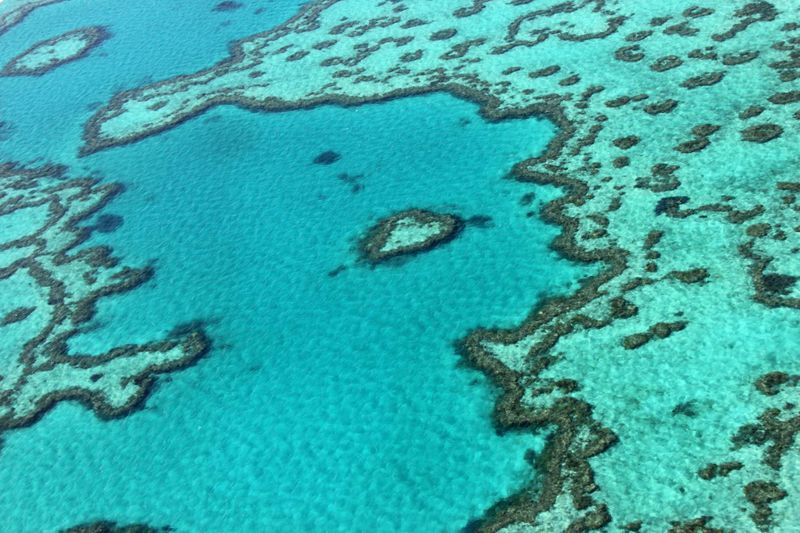
Image Credit: AFP
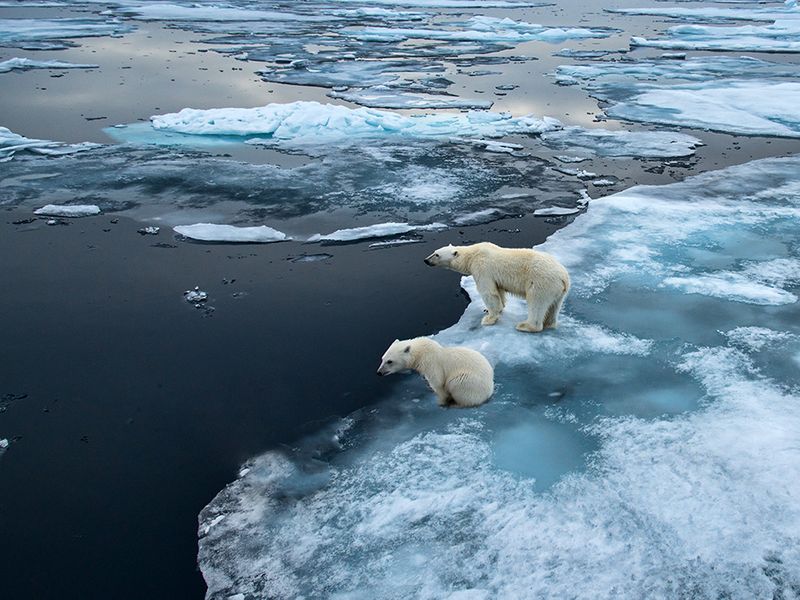

Image Credit: AFP
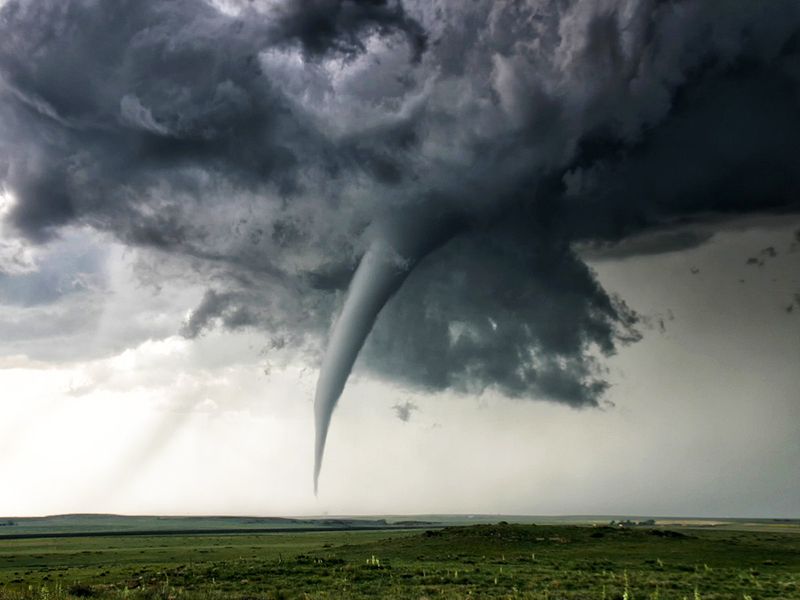
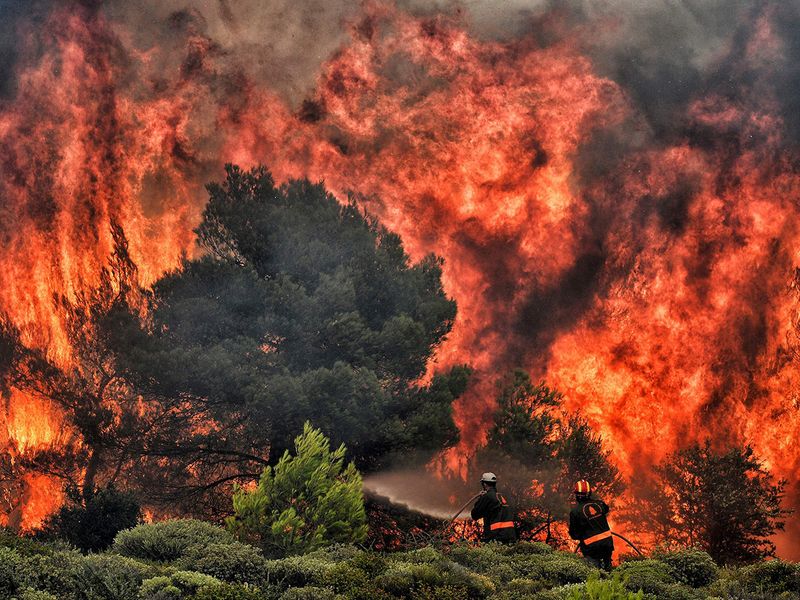
Image Credit: AFP – Getty Images
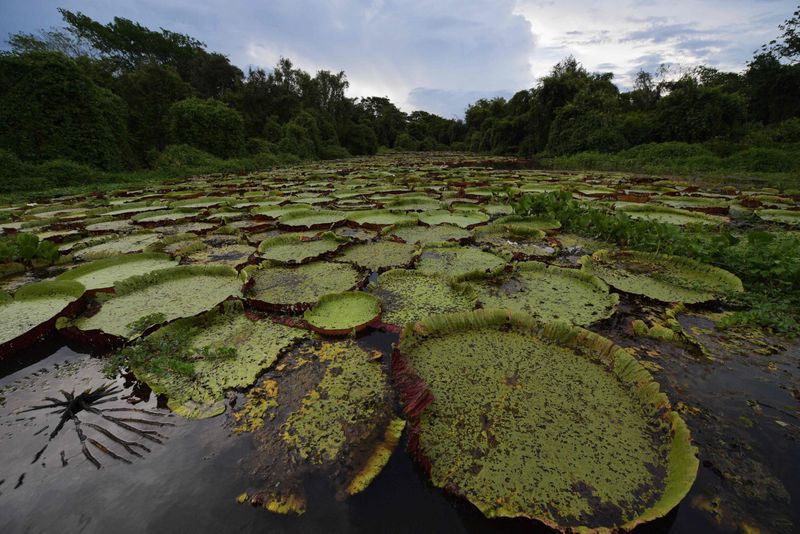
Image Credit: AFP

Image Credit: AP

Image Credit: AFP
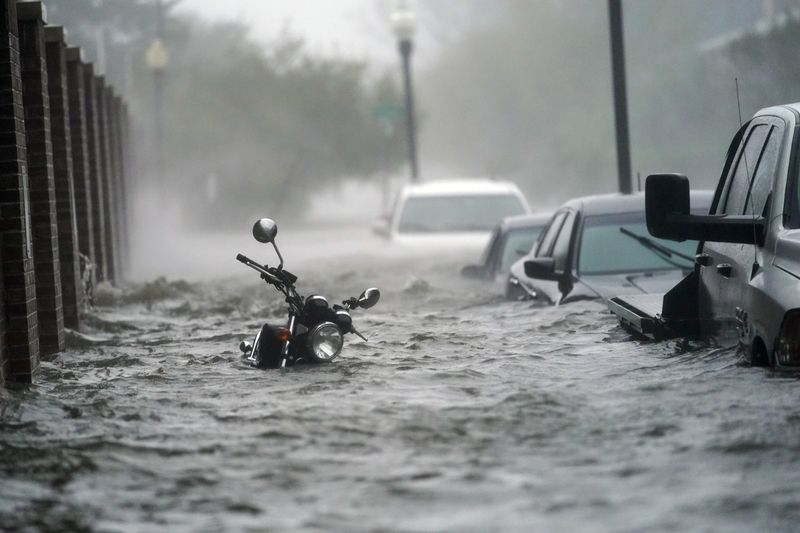
Image Credit: AP
What do experts say about climate change?
Climate change, its impact and actions to take have been discussed widely across the globe. Whether it is taken seriously and acted upon is a different debate altogether.
Multiple studies done by climate scientists around the world say that climate-warming trends over the past century are extremely likely due to human activities.
■ Between 2006 and 2016, the rate of global sea-level rise was 2.5 times faster than it was for almost all of the 20th century.
■ More than 20 million people a year are forced from their homes by climate change.
■ The United Nations Environment Programme estimates that adapting to climate change and coping with damages will cost developing countries $140-300 billion per year by 2030.
A review of 57 scientific studies by a team of British academics concluded that global warming is leading to an increase in hot, dry weather around the world. The alarming role of global warming was highlighted by Iain Colin Prentice, one of the review authors and the director of the Leverhulme Center for Wildfires, Environment and Society at Imperial College London. There is “no doubt whatsoever” of the link between climate and fire risk, he told a news agency. “Fire weather does occur naturally, but is becoming more severe and widespread due to climate change,” said professor Richard Betts, head of climate impacts Research at the Met Office Hadley Center.
Scientists attribute the global warming trend observed since the mid-20th century to the human expansion of the ‘greenhouse effect’.
Greenhouse gases and permafrost
Frozen Arctic soils are set to release vast amounts of greenhouse gases to the atmosphere as they continue to thaw in coming decades. Despite concerns that this will fuel future global warming, the scale and speed of this important climate process remain uncertain. To help address this knowledge gap, ESA-funded researchers have developed and released a new permafrost dataset – the longest, satellite-derived permafrost record currently available. Covering 18 million sq km, northern hemisphere permafrost areas have been warming since the 1980s, according to the Intergovernmental Panel on Climate Change’s latest report on oceans and cryosphere.
The total carbon released each year may rival present-day emissions from all EU countries by the end of the century – and are expected to amplify future climate change.
The new 21-year satellite-derived record details the annual changes to the northern hemisphere permafrost soils from 1997-2018. This is the longest satellite permafrost record currently available and extends the time-series by seven years.
■ The international database in Belgium calculated that from 1980 to 1999, the world had 4,212 disasters affecting 3.25 billion people and costing $1.63 trillion, adjusted for inflation.
■ From 2000 to 2019 those figures jumped to 7,348 disasters, 4.03 billion people affected and $2.97 trillion in damage.
Floods killed more than 1,900 people in India in June and affected 17 million people, according to the centre’s data. Other flooding and associated landslides in Nepal, Pakistan, Afghanistan and again in India killed at least another 1,250 people.
African floods killed nearly 600 people. And flooding along Yangtze River and the Three Gorges Dam in China killed at least 279 people in the summer and caused economic losses of more than $15 billion, according to the World Meteorological Organisation.

Image Credit: AFP
Hue, Vietnam had a record 261 centimetres of rain in October, according to the WMO.
US record for disasters
The US set a record for the most disasters costing at least $1 billion, according to the National Oceanic and Atmospheric Administration. By early January, officials believe 20 billion-dollar disasters would have hit the country.
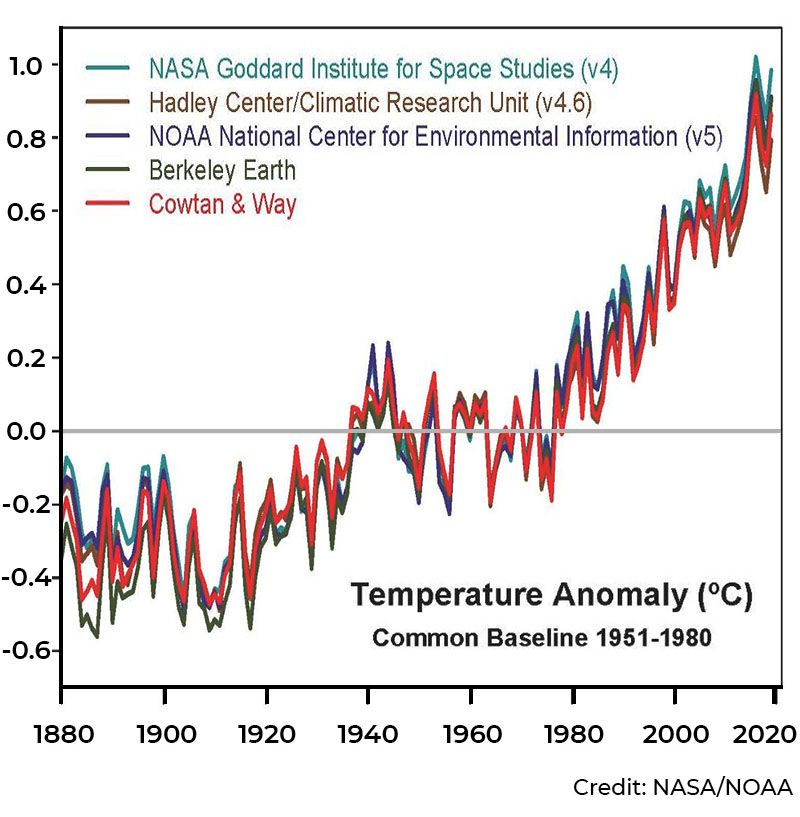
Only three states weren’t part of a billion-dollar weather disaster (Alaska, Hawaii and North Dakota) -and all the coastline from Texas to Maine, except for a tiny part of Florida, was under a watch or warning for a hurricane, tropical storm or storm surge from those systems in 2020, according to US weather officials.
With 30 named storms, the Atlantic hurricane season surpassed the mark set in 2005. It also ran out of storm names and eventually looked deep into the Greek alphabet. Louisiana got hit five times. At one point, the American Red Cross had 60 New Orleans hotels filled with refugees.
Drought and heat
With a devastating 20-year mega-drought and near-record heat, California had at least 16,907 square kilometres burned by wildfire, doubling the previous record area burned. Five of the six largest wildfires in California history have been in 2020. Oregon and Colorado had immense fire damage, too.
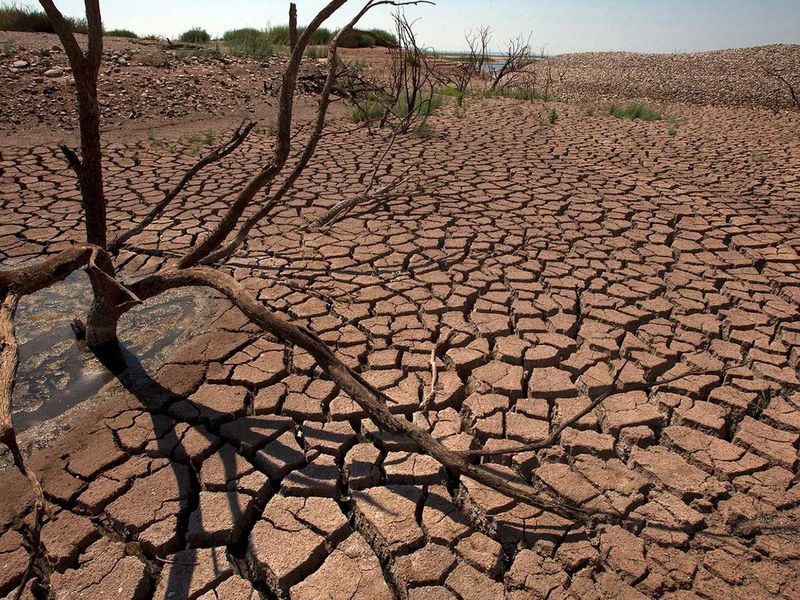
Image Credit: AP
Between fires and hurricanes, the American Red Cross provided a record 1.3 million nights of shelter for disaster-struck Americans – four times the annual average for the previous decade.
Africa has been warming progressively since the start of the last century, and in the next five years, northern and southern Africa are set to get drier and hotter, while the Sahel region of Western Africa will get wetter, UN World Meteorological Organisation’s (WMO) Regional Strategic Office Director, Filipe Lucio, has said.
Extremes
Heat waves and droughts, hit all over the world. Siberia reached a record 38 degrees as much of the Arctic was 5 degrees Celsius warmer than average and had an exceptionally bad wildfire season. Arctic sea ice shrank to the second lowest level on record and set a few monthly records for melt.
Death Valley saw the warmest temperature recorded, 54.4 degrees Celsius, on Earth in at least 80 years.
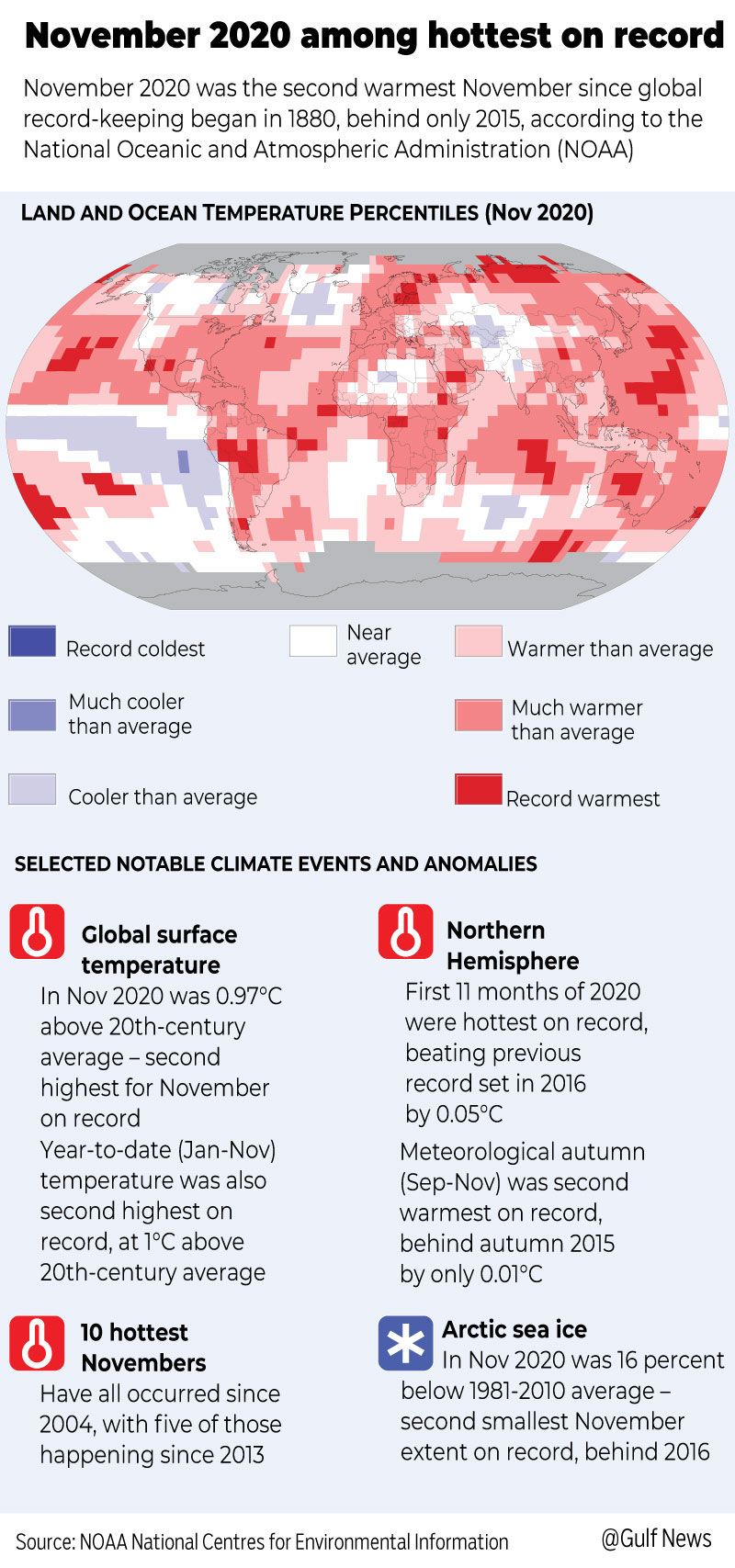
Warm earth
Just how warm Earth stays this December will determine if 2020 goes down as the hottest year on record. Last month was the second hottest November on record, behind only 2015. Read more
Earth’s temperature in November was 13.87 degrees Celsius, which was 1.75 degrees (0.97 degrees Celsius) above the 20th century average.
Wildfires
Wildfires in northeastern Russia in 2020 were linked to broader changes in a warming Arctic, according to a report by the National Oceanic and Atmospheric Administration.
The wildfires were exacerbated by elevated air temperatures and decreased snow cover on the ground in the Arctic region, the report found.

Image Credit: AFP
In Australia, scientists say we can expect more bushfires in future.
The first major bushfires of the 2020-21 fire season first broke out in the southern hemisphere spring even as Australia was still recovering from last season’s record infernos, which not long ago would have been considered a once-in-a-generation event. Read more
Satellites recorded the second lowest extent of sea ice in September since record-keeping began 42 years ago, the report found.
As snow and ice cover decreases, the land and ocean surfaces also absorb more heat.
Floating iceberg
Scientists are expecting a massive A-68A iceberg to strike land this month inflicting havoc near South Georgia Island.
The iceberg has been travelling thousands of kilometers from the Larsen C ice shelf, in Antarctica, since 2017 and now is around at a distance of 120 km from South Georgia. “If it remains on its current path, the iceberg could ground in the shallow waters offshore, threatening wildlife, including penguins and seals,” researchers say.
All is not lost. There is hope
New Zealand Prime Minister Jacinda Ardern recently declared a “climate emergency”, telling parliament that urgent action was needed for the sake of future generations. She said the science on climate change was clear and New Zealand had to acknowledge the threat.
But the forecast for global warming is looking a little less bleak in the long term, though not so rosy in the short term.
Scientists and diplomats say the outlook for mid-to-late century is not as gloomy as it was when the historic 2015 Paris climate accord was signed. But they caution that impacts of warming already are hitting Earth harder than scientists predicted. And they say the use of coal, oil and natural gas that fuels climate change is not dropping as much as needed, despite cheaper renewable energy.
The climate change landscape has changed in five years, and UN officials credit both cold, hard economics and a push from an idealistic younger generation.
Enter ‘ecocide’
The idea of criminalising “ecocide”, or damage to the environment, is beginning to gain ground. “People are starting to realise that if we don’t get serious about climate change and the threats to biodiversity, then we’ll have nothing for ourselves, nothing for our children and grand-children,” said Rob White, professor of criminology at the Australian University of Tasmania.
Deliberate environmental destruction in war has a long history and it was a conflict that shaped the concept of ecocide.
But activists want ecocide to be a crime in peacetime as well.
What steps can be taken to prevent climate change?
Achieving net-zero carbon emissions and limiting global temperature rise to 1.5 degree Celsius should be the key, according to many scientists.
Rebecca Willis, a professor of climate and energy policy at Lancaster University in the UK, outlines five measures that can help restrain emissions.
1) Task all government departments with a climate agenda so that they’re obligated to show how their policies will contribute to emissions cuts.
2) Engage the public in developing climate strategies with citizens’ assemblies and involve workers in designing policy to ensure a “just transition” from carbon-intensive industries like coal mining.
3) Enact “symbolic policies” to set the investment climate and catalyse radical change – ban advertising for petrol cars for instance, or allow people to generate and sell renewable energy at home.
4) Keep all remaining fossil fuels in the ground and end the US$5.2 trillion spent on subsidising the fossil fuel industry each year.
But it’s not as simple as letting nature do all the hard work, says Sebastian Leuzinger, an associate professor at the Auckland University of Technology.
The “right tree should be planted at the right time in the right place”:
1) Tree species that grow fast are able to store carbon more rapidly, but slower, bigger trees will ultimately store more in the long run.
2) Non-native trees may be better at absorbing carbon efficiently than native species, so keep an open mind to their role.
3) When choosing a species to plant, trust local foresters and the community that will have to live alongside and nurture them.
Climate change doubters
Climate change doubters on the other hand argue that temperature extremes happen in both summer and winter and it is a natural process and not man made.
And some of those who reject mainstream climate science argue as a matter of academic freedom.
James Taylor, a senior fellow at Heartland, an Illinois-based group that dismisses climate change, said: “We’re very concerned the global warming propaganda efforts have encouraged students to not engage in research and critical thinking.”
There are also many who believe that climate data is fabricated.
The reason for such doubts can be explained through the words of geophysicist Marcia McNutt, who once headed the US Geological Survey: “Science is not a body of facts…Science is a method for deciding whether what we choose to believe has a basis in the laws of nature or not.” But that method doesn’t come naturally to most of us. And so we run into trouble, again and again, geophysicist Marcia McNutt said.
– with inputs from agencies

